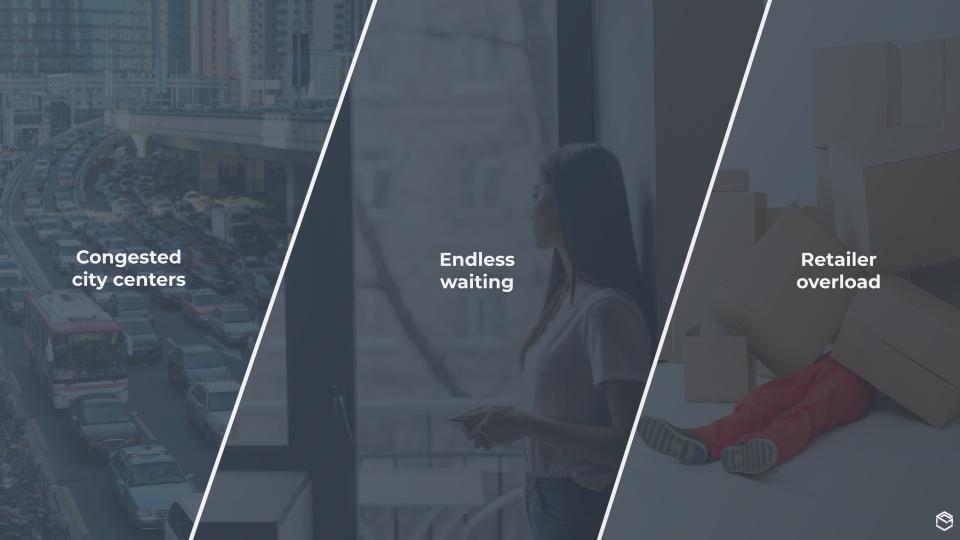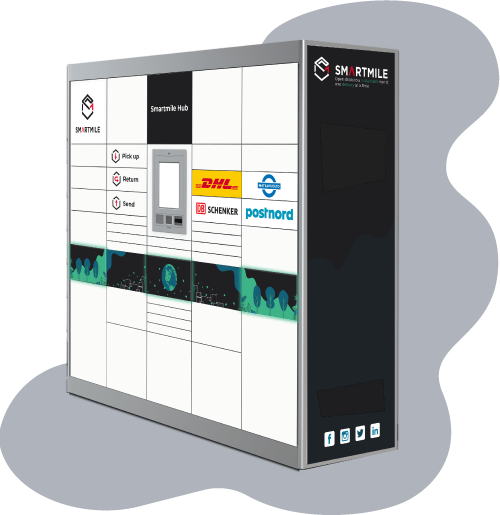Sustainability and Smartmile
Determining a carbon footprint is not simple; many factors play a part. For example, your location, distance to a parcel machine, the type of vehicle you and the courier take (if any), and even whether your parcel is wrapped in plastic, recyclable material or not packed at all.
In short, stakeholder choices in delivery matter, and will affect the sustainable solution in the last mile.
This page below will explore the history, solution potential, importance of connecting stakeholders, and our company vision.
Why do we face such an unsustainable last mile?
Rising e-commerce among individuals within a business-oriented infrastructure
Before the rise of e-commerce, delivery was a business-oriented service. Couriers delivered many parcels to central commercial clients. This meant driving to a few city centres or from distribution warehouses to retail chains. Already, the city infrastructure fell short. (PWC, 2017)
Accelerated by COVID-19, behaviour shifted to individuals ordering more online, expecting fast and sustainable delivery. To fulfil these wishes, couriers struggle to hire enough drivers, move to more delivery options, optimize delivery routes to minimise footprint, all while the number of pick up locations changed from a few to, well…. millions. Despite the demands and landscape changing, the infrastructure for delivery remained mostly the same. The outcome of this system in crisis shows through congested cities, extended delivery timeframes, and insane emissions in the last mile. The last mile in 2020 accounts for 51.4% of the overall cost in delivery. (PWC, 2017; Shih, 2021)


One of the most important drivers of CO2 is failed deliveries
Let's imagine a simplified example:
Ten customers ordering online choosing home delivery
We are in a big buzzing city and one courier serves all customers. Each customer receives a delivery time frame of a few hours. The courier makes ten stops within the same city. Seeing that it is a big city, parking is limited, so let’s add some congestions to the mix.
As expected, not everyone can stay home to receive their parcel. For example, three out of ten deliveries fail. The courier will either have to return or drive to an alternative location, such as your local retailer—adding kilometres to the total distance driven once again.
And this is just 10 people, but note that every second, 4160 parcels are shipped globally. (Pitney Bowes, 2020)
So what is Smartmile's impact?
Building one ecosystem for all—centralising delivery to minimise emission
Let’s take the same example. We install a big Smartmile Hub at a local grocery store. Instead of driving to ten different houses, the courier only makes one stop, and likely no deliveries fail. The centralisation to one Hub already decreases the potential of delivery-caused traffic jams, eliminates the chance of failed deliveries, and allows customers complete freedom to pick up when it suits them. The location selection allows customers to combine pick up with grocery shopping, minimising footprint even more. As a delicious cherry on top, retailers do not have to worry about handling parcels because the system runs automatically.
In a way, we re-shape the wisdom in the original model in a more agile and customer-oriented manner. The true transformation lies in collaborating with all stakeholders.


One parcel machine already could decrease CO2 by 51.2% per delivery (Jiang et al. 2019)
And we dedicate part of our compartments to concretely making the world better!
So... what's the dream?
One ecosystem for delivery enabling CO2 negative delivery worldwide
Connecting all stakeholders in one dynamic ecosystem that we dedicate to helping all players optimise their processes with one another. We are the link that combines shared system knowledge regarding volume expectation, capacity, pick up times, and more through software integration with the goal to eliminate the footprint of delivery.
Curious to talk more?
To provide the best experiences, we use technologies like cookies to store and/or access device information. Consenting to these technologies will allow us to process data such as browsing behaviour or unique IDs on this site. Not consenting or withdrawing consent, may adversely affect certain features and functions.
Functional Always active
The technical storage or access is strictly necessary for the legitimate purpose of enabling the use of a specific service explicitly requested by the subscriber or user, or for the sole purpose of carrying out the transmission of a communication over an electronic communications network.
Preferences
The technical storage or access is necessary for the legitimate purpose of storing preferences that are not requested by the subscriber or user.
Statistics
The technical storage or access that is used exclusively for statistical purposes.
The technical storage or access that is used exclusively for anonymous statistical purposes. Without a subpoena, voluntary compliance on the part of your Internet Service Provider, or additional records from a third party, information stored or retrieved for this purpose alone cannot usually be used to identify you.
Marketing
The technical storage or access is required to create user profiles to send advertising, or to track the user on a website or across several websites for similar marketing purposes.

